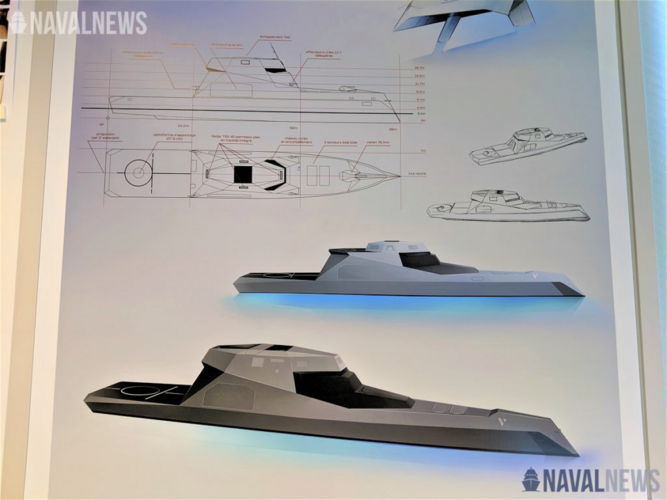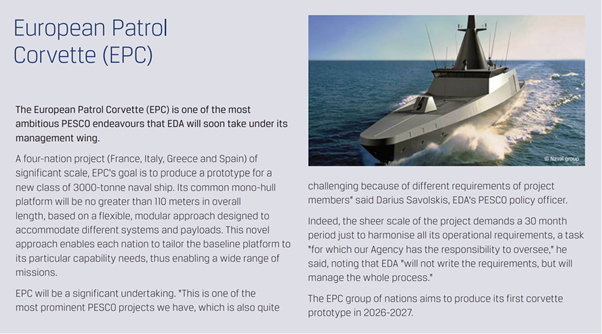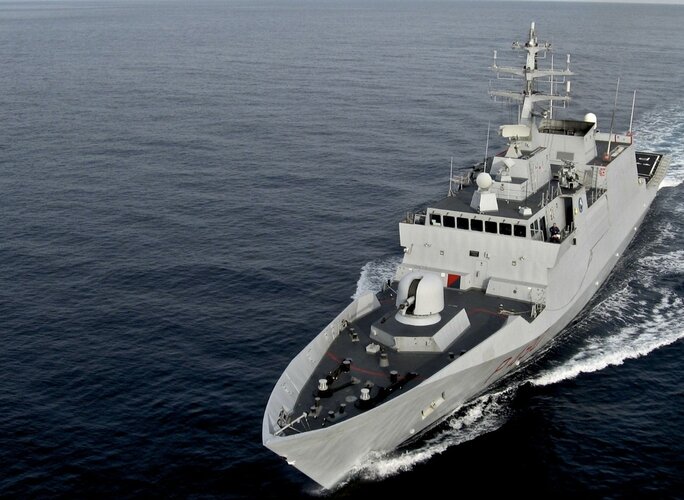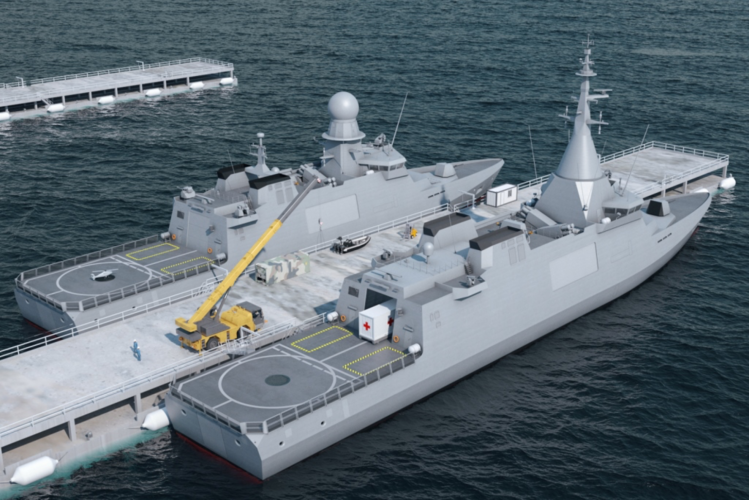EPC aims to generate a class of ships adaptable to different national needs through the cooperative development of technological bricks that can be integrated into platforms that will adopt a common core. However, this does not mean that future corvettes, for example French and Italian, will necessarily resemble each other, which will probably not be the case. The European Commission itself wants MMPC to be available in at least two versions. It is in fact likely that this project will result, on the Italian side, in an evolution of the Doha class corvettes and, on the French side, in a new version of the Gowind. No design of the EPC has yet been developed, explains a source close to the case to Mer et Marine. "There is no design yet. All the images of EPC that are circulating do not correspond to anything, they were simply created by certain partners of the project to have something to show".
Regarding these building blocks, the Naviris and Navantia EPC project will focus in particular on reducing the environmental footprint and optimizing energy, multiplier effects including the deployment of drones, flexible zones capable of integrating interchangeable modules, and the use of cloud data. "Call 1 will allow us to develop the technological building blocks and lay the first design foundations for this new class of highly modular, multi-mission ships that must be embodied in several variants in order to meet the needs of each nation."
MMPC includes a second stage, Call 2, which is the subject of a new call for projects. Manufacturers only have a few days left to submit their copy since the deadline for submitting applications is set for November 22, 2023. This next phase should allow the development of the technological building blocks to be completed and, above all, the design of the different versions to be refined. Call 2 will be accompanied by a European subsidy of 154.5 million euros, conditional as for Call 1 on a financial contribution from the participating countries, which will be equivalent to that of the EDF. And, above all, on a commitment from each State to construct ships. The manufacturers leading the EPC project are obviously candidates, but the call for projects is open to other consortia, even if they were not selected for Call 1. It would therefore seem that a Scandinavian proposal is in preparation. Naviris, Navantia and their partners hope in any case to be selected during 2024 with a view to notification of the contract relating to Call 2 at the end of 2025, so as to take over directly from Call 1. This second phase should last four years, which would take the project until the end of 2029.
For France, the timetable as currently planned coincides well with the deadlines set for the six offshore corvettes (CH) that will succeed the surveillance frigates. Included in the military programming law (LPM) 2024-2030, this program should see the new vessels delivered between 2030 and 2035. This therefore suggests a notification at the end of 2025, in order to use the work of Call 1 as a basis and then integrate into the CH development studies those carried out within the framework of Call 2. And, depending on the building blocks selected, to gradually implement them on the platforms. This, while Naval Group is modernizing the industrial tool of its Lorient shipyard in order to be able to produce corvettes in less than 30 months. Which means, for a delivery of the lead ship in 2030, a start of construction hoped for in 2027, knowing that the studies are still continuing during the construction phase


















